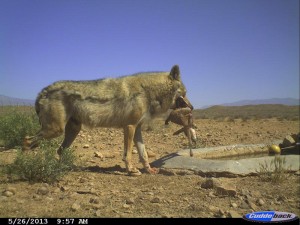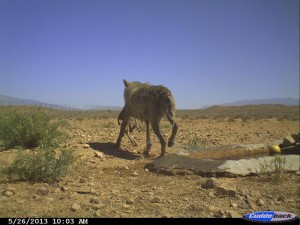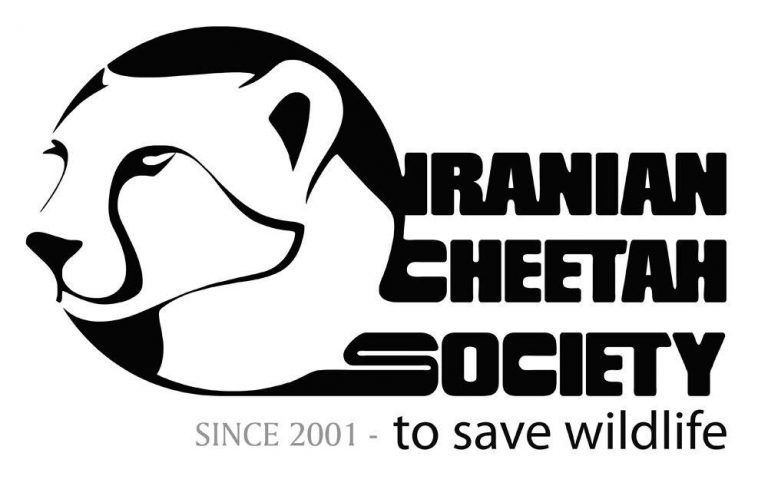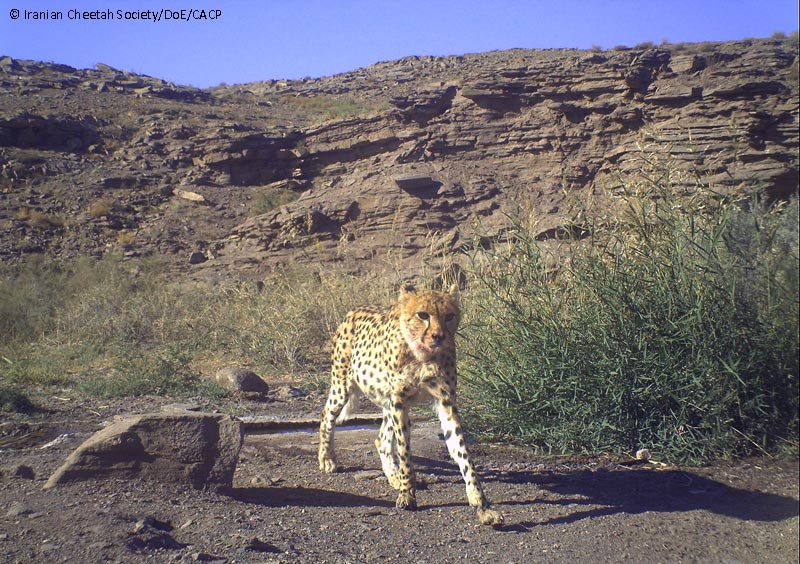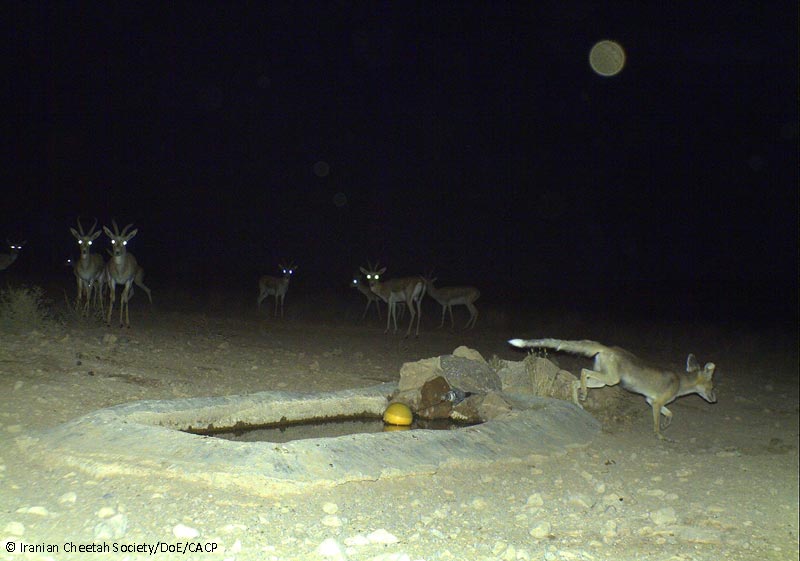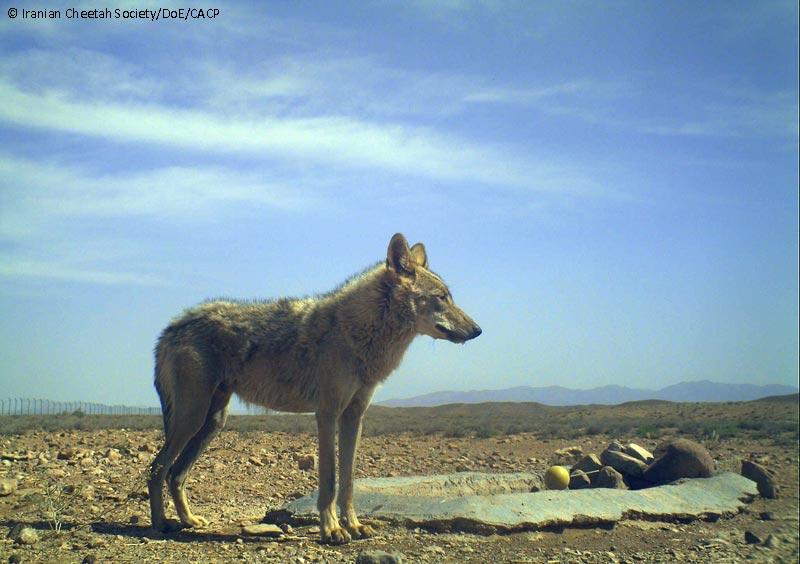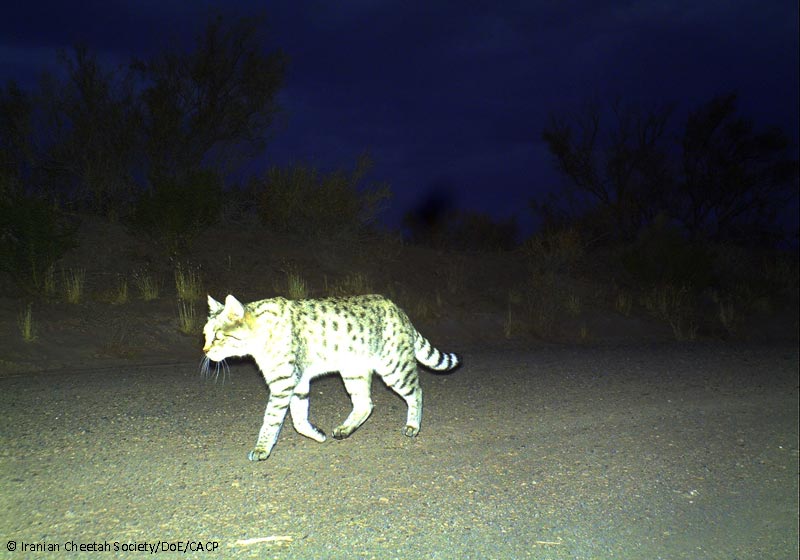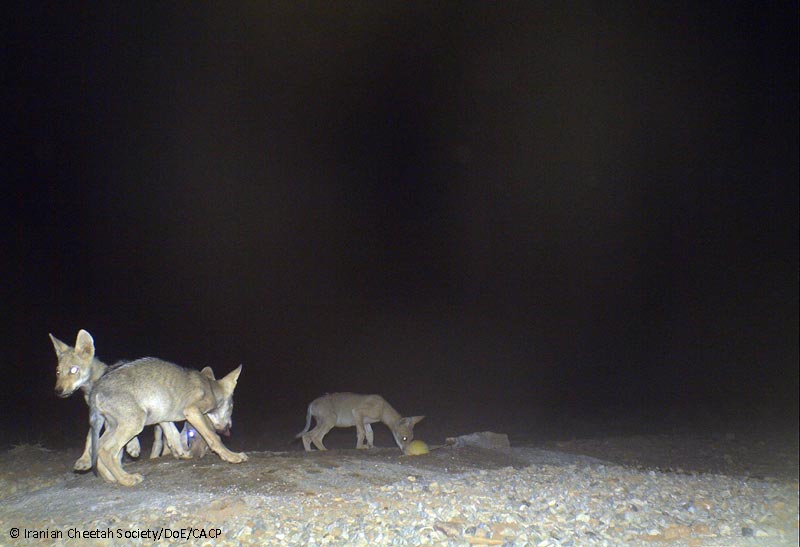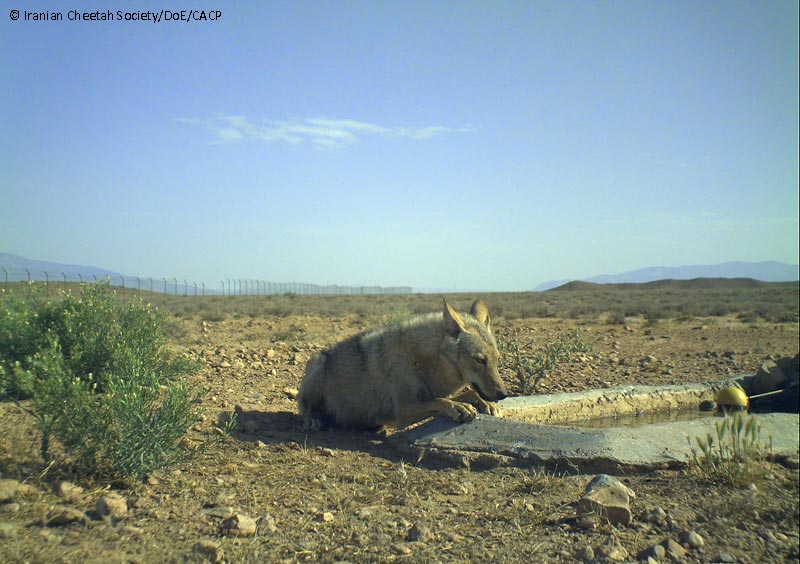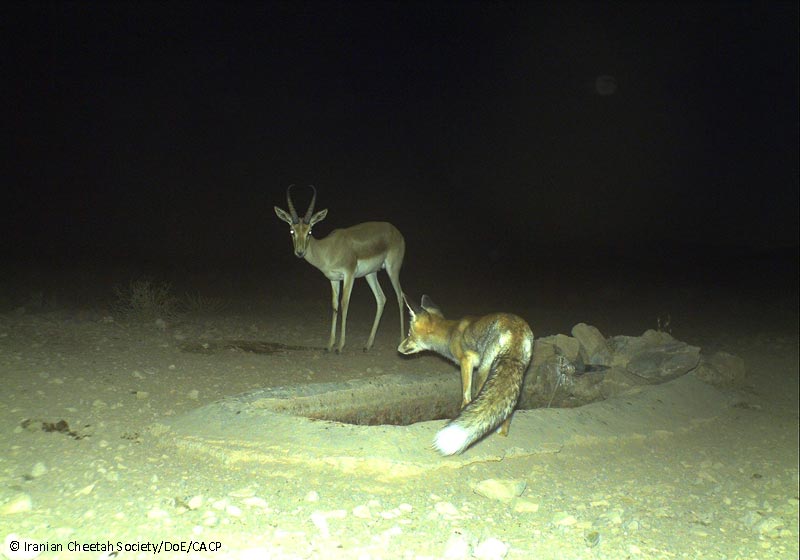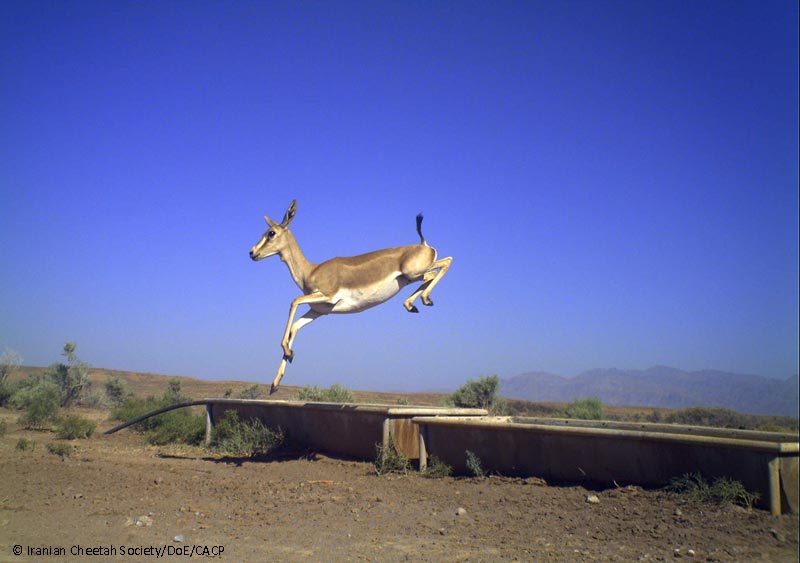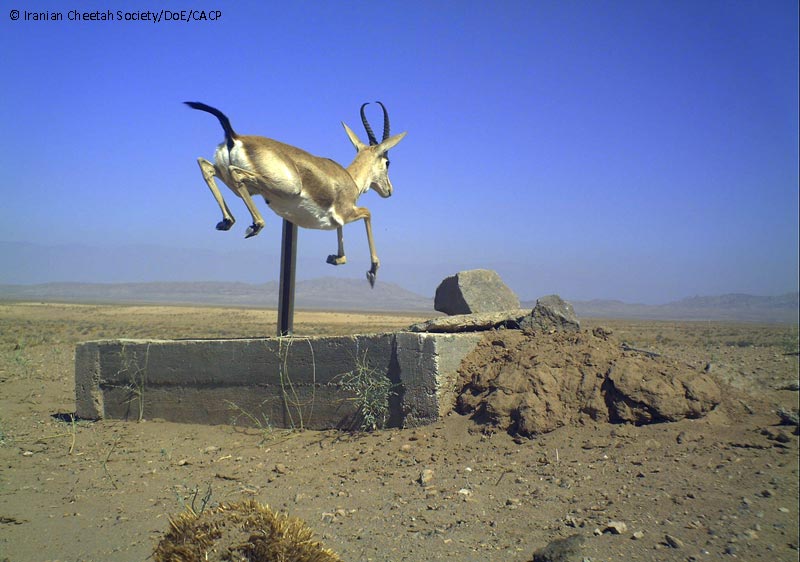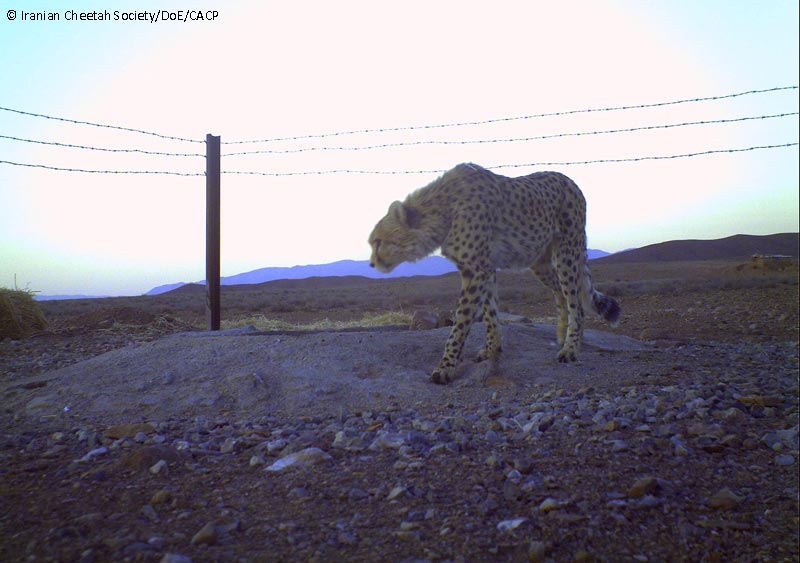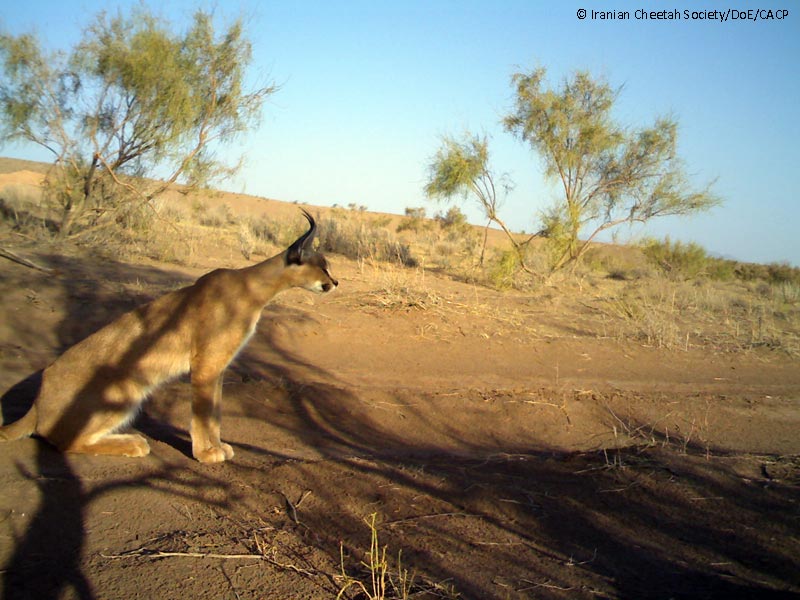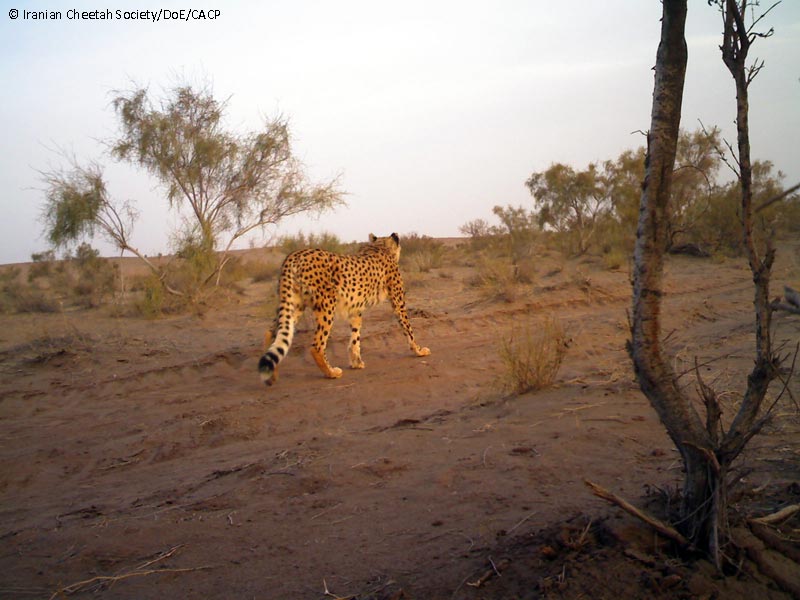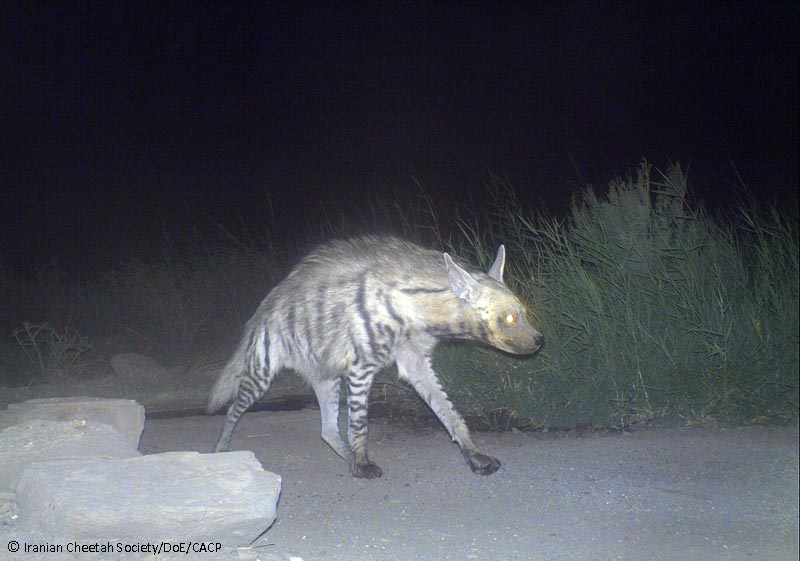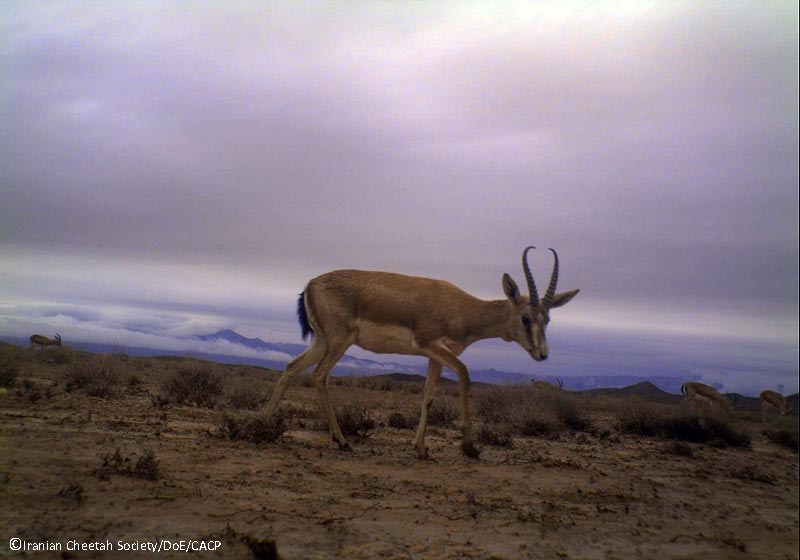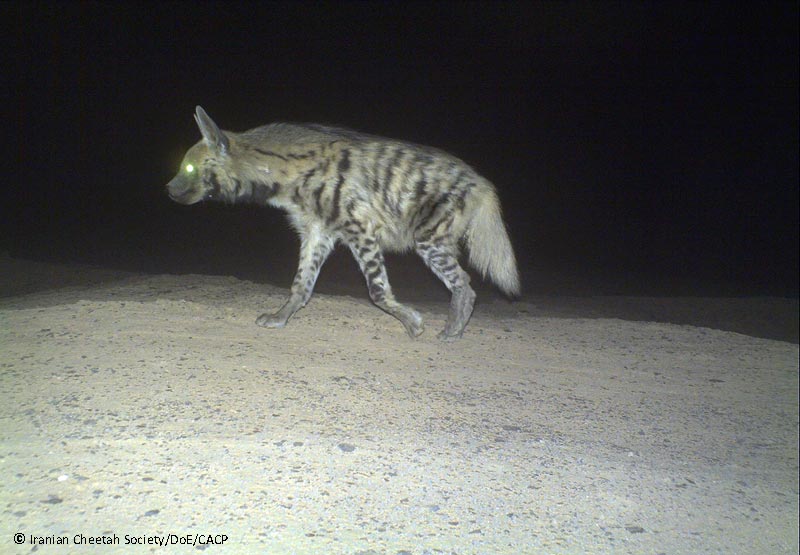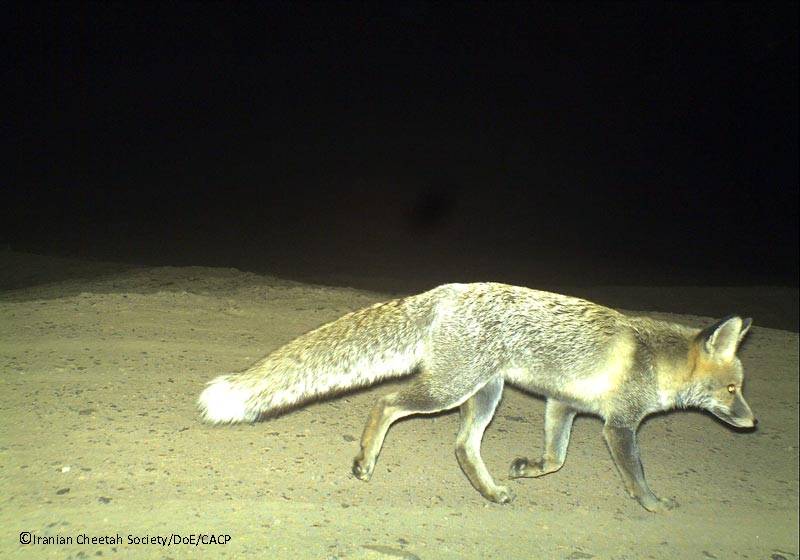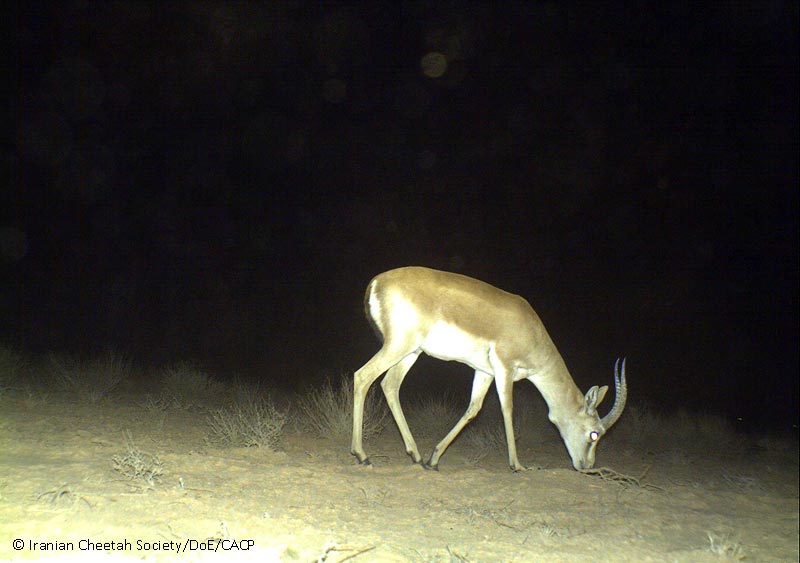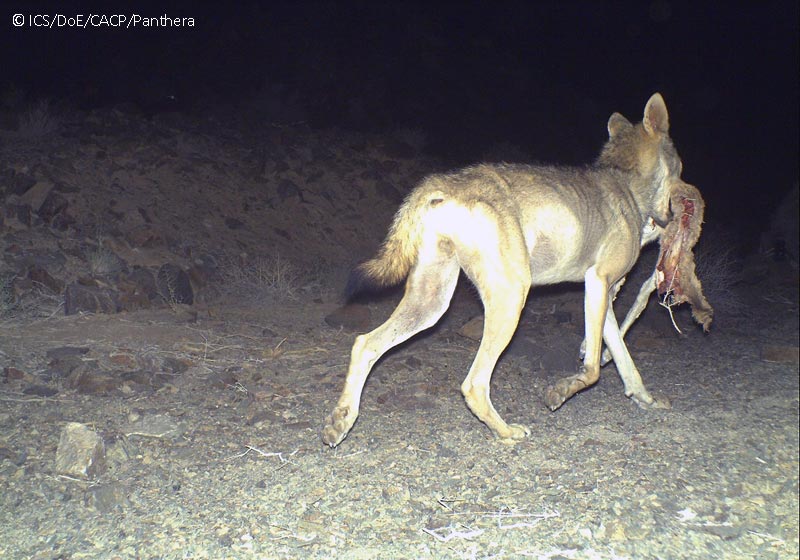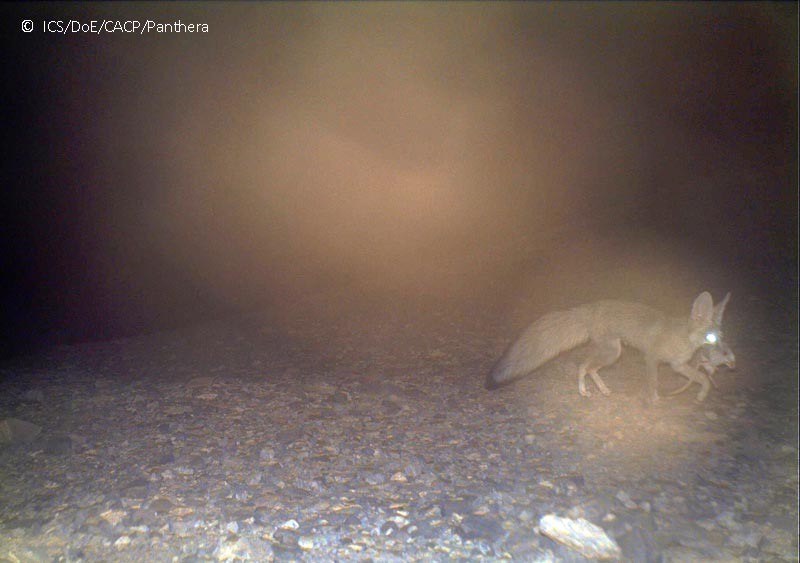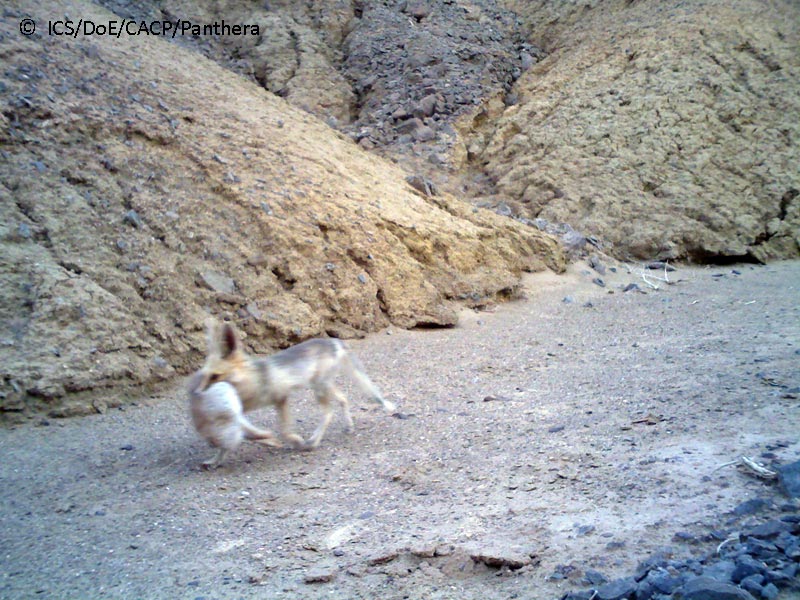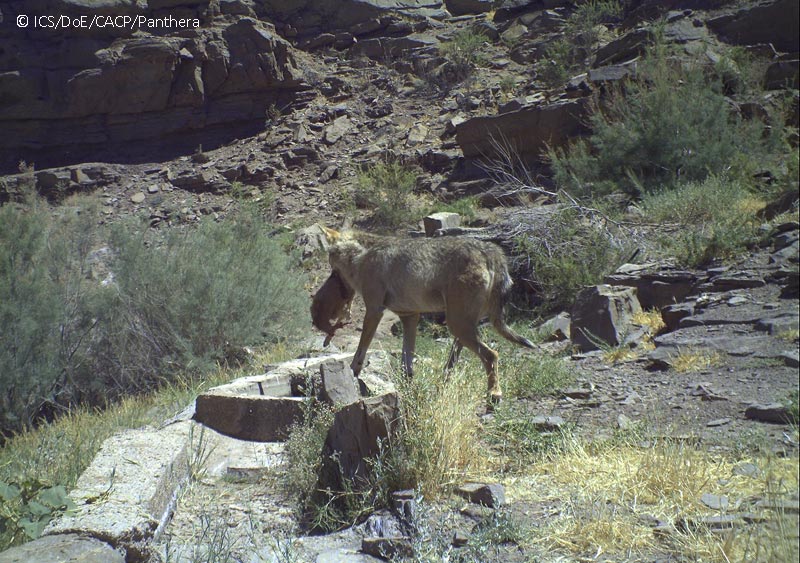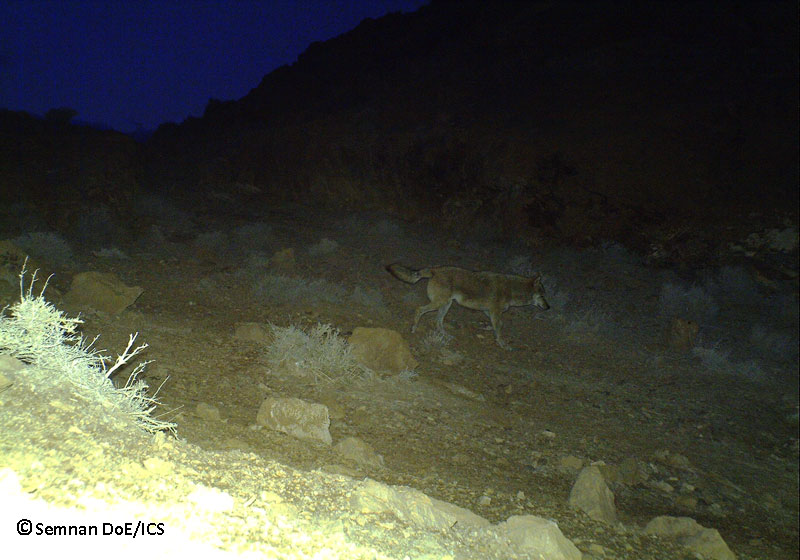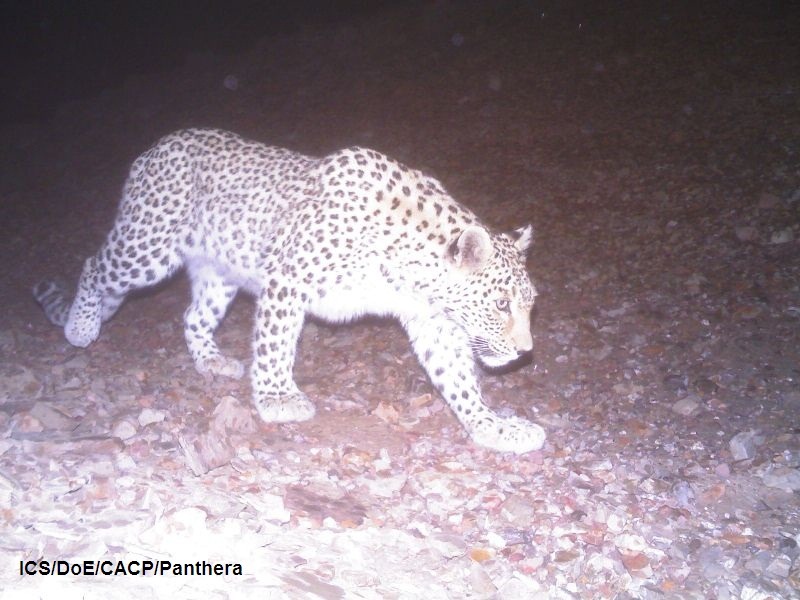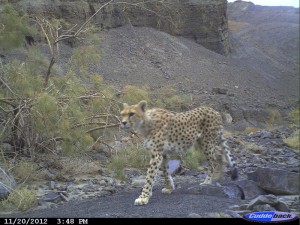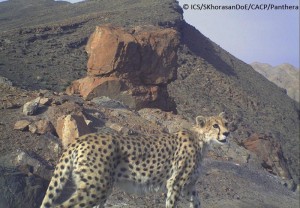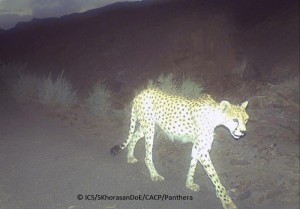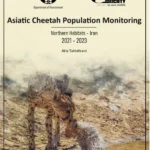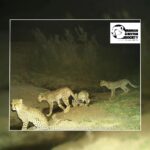Iranian Cheetah Soceity’s country-wide monitoring program for the Asiatic Cheetahs continues in a new site, Naybandan Wildlife Refuge.
The project team has just finished the intensive camera-trapping in Miandasht Wildlife Refuge, northeastern Iran, and now moves the camera traps to Naybandan, eastern Iran.
During the survey in Miandasht, four cheetah individuals were detected and many wildlife species were recorded. The survey in Naybandan is conducting with collaboration of South Khorasan Office of Iran DoE and Pars Wildlife Institute.
Naybandan Wildlife Refuge is the large reserve in Iran with an area of 14000 km2 . Iranian Cheetah Society has surveyed the reserve in 2013 and hopes that the new survey will result in a new estimation of cheetah population in the reserve.
Asiatic Cheetah Population Monitoring Program
ICS’s Cheetah Project Featured on IUCN/SSC Cat Specialist Group
Iranian Cheetah Society’s Cheetah Project Featured on IUCN/SSC Cat Specialist Group.
The first phase of ICS’ “Status of Asiatic Cheetah in Iran: A Country-scale Assessment” featured as “The Project of the Month” on IUCN/SSC Cat Specialist Group. ICS is doing a nation-wide population assessment of the Asiatic cheetahs across Iran using camera traps.
The first phase of the project has been conducted during 2011-2013. The project team has just launched the second phase of the camera-trapping surveys in selected cheetah reserves.
To read more about our cheetah project follow this link: http://catsg.org/index.php?id=575
During the Cheetah Conservation Program in Miandasht Wildlife refuge, multiple photos of different species have been taken around Koushki enclosure, which are very interesting.
The most considerable ones are two adult cheetahs that have been passing by the Koushki enclosure several times. Their skin patterns have shown that one of them is a new individual identified this summer for the first time and the other one is a locally born cub becoming of adult age. Other species are Hyena, Wolf, Fox, Rabbit and Deer. The third round of the Cheetah Conservation Program in Miandasht has been finished successfully by the ICS and Environmental Affair and 4 new individuals were identified.
‘Iranian carnivores’ dining menu through the lens of a hidden camera
The newest captured photos by camera traps in different areas of Iran, represents the diverse food menu of the Iranian carnivores. By now various pictures of the Caracal, Rüppell’s fox, Blanford’s fox (Vulpes cana), Wolf and Hyena were taken in different areas of Iran which demonstrate the hunting and scavenging actions of these animals on other mammals.
The ‘National Monitoring of the Asiatic Cheetah Program in Iran’ which got started by the Iranian Cheetah Society with the collaboration of wildlife departments in different states of Iran has been running since mid 2011. This program dedicates a great amount of information to researchers and scholars and based on that information; they can discover valuable new facts about the their lives and the ecology of different species. These discoveries and information can be used in order to figure out more about the situation regarding the different species of carnivores – especially the Asiatic Cheetah.
Khosh-Yeilagh is one of the most well-known protected areas located north of Shahrood in Semnan province. For more than four decades, the area has been a historical habitat for the Iranian Cheetah with an initial estimated 50 to 70 cheetahs living in the area in the 1970’s.
For years it was believed that the Iranian Cheetah has become extinct in Khosh-Yeilagh with the last sighting going back to 1983. However, a recent sighting made by the Park Ranger, Mr Ajami, provided hope that cheetahs may still exist there. This was later confirmed again by the Rangers when two cheetahs were sighted.
Subsequently, the Environmental Protection Department of Semnan province started a monitoring project in cooperation with the Iranian Cheetah Society. The objective of the program was initially to observe the conditions of cheetahs in the area and to obtain more information about the rare Iranian cat. The project was started last winter and in the first phase several cameras were installed at locations specified by the park rangers and environmental experts.
The Iranian Cheetah Society has undertaken projects in the past to educate the residents of the near-by villages about cheetahs. As part of the project, art festivals and educational plays have been organised to familiarize residents with cheetah habits and behavior.
New hope for Darband Ravar Wildlife Refuge, Kerman province
After 18 month of camera trapping in Darband Ravar wildlife refuge, finally one of the big cats of this region was trapped in our pictures .since October 2012, more than 25 points in this region has been monitored by ICS and Ravar’s DOE’s office .on May 2014 in 2 points the pictures of leopards have been captured. Earlier wild cat and Caracal were photographed in this region. One of the pictures shows a female leopard but because of the different angel of the other picture, it is impossible to tell whether these are the same individual by comparing their moles. However it seems that although these 2 pictures were captured within 8 kilometer distance, they belong to the same individual. In 2007 one leopard was killed by car crash in this region.
Because of insecurity of this region, it is possible to investigate only small part of this region .therefore by cooperation of the safe guards and researchers 4 points of this area have been monitored in hope to capture Cheetah’s image. The leopard’s pictures in this area increased the anticipations to record the Cheetahs in future.
“Iran is home to the last known population of Asiatic cheetah which once roamed across vast ranges of west and south Asian countries. However, despite enforced protection efforts in recent years, no reliable information was available about the subspecies population in the country which made assessment of conservation measures impossible.
Accordingly, a comprehensive monitoring program was initiated by the Iranian Cheetah Society (ICS) in partnership with Iran’s Department of Environment, Conservation of Asiatic Cheetah Project and Panthera to understand demographic characteristics of the cheetahs in Iran between 2011 and 2013. As a result, a population of 40 to 70 individuals is now concluded for the entire country, fewer than what was already thought, i.e. 70 to 100.camera traps are reliable tools which are applicable for investigating population of elusive marked cats, such as the cheetahs. However, this technology has been rarely applied to the species due to its elusive nature and low density. In Iran, due to political sanctions, necessary equipment are not easily accessible which prevented a thorough status assessment before due to lack of proper number of camera traps. Thanks to various donors and partners, the monitoring program was initiated recently to fill the gap in knowledge which is essential for improving protection. Accordingly, almost 10 reserves within Iran were covered by means of infra-red camera traps to yield a reliable estimation of the cheetah population.
However, since no basic figure is available about the cheetah population for previous years, it is difficult to judge about population trends of the Asiatic cheetahs in Iran. Meanwhile, based on sporadic data available from previous years, it seems that the cheetah population has a decreasing status in recent years, indicting its most critically endangered status ever. Therefore, a comprehensive program is needed to protect the Asiatic cheetahs in the country. As part of its Cheetah Program, the ICS has a broad range of activities to halt the decrease, including training and equipping game guards, stopping overgrazing within reserves, community-based programs, application of genetic methods to understand population composition, etc. It is highly recommended to involved conservation agencies to revise existing protection efforts in Iran in order to safeguard cheetah survival in the country.
“Since initiation of cheetah national monitoring program aiming to understand demographic status of the Asiatic cheetah in Iran, a family has been explored in Miandasht Wildlife Refuge, northeastern Iran composing of three cubs in summer 2012. During their first year of life, the cheetah mother and her small cubs patrolled a small area, limited to a number of water sources across the area’s core zone. After re-establishing monitoring camera traps since early spring 2013 in the area, it was proved that despite high cub mortality of the cheetahs during their first year, the supermom was successful to raise her entire family to the second year. As approaching to the fall when the family is expected to be naturally split, the cheetahs are seen on camera traps in many parts of the area, indicating their significant range expansion.
As the only evidence of cheetah breeding across entire Iran during 2012, the cheetah mom’s success is due to prey restoring in the area by the Iranian Department of Environment which doubled population of Persian gazelle, a favorite prey for the cheetahs in recent years. The cheetah monitoring program in Miandasht Wildlife Refuge is implemented jointly by the ICS and DoE in partnership with
CACP and Panthera.
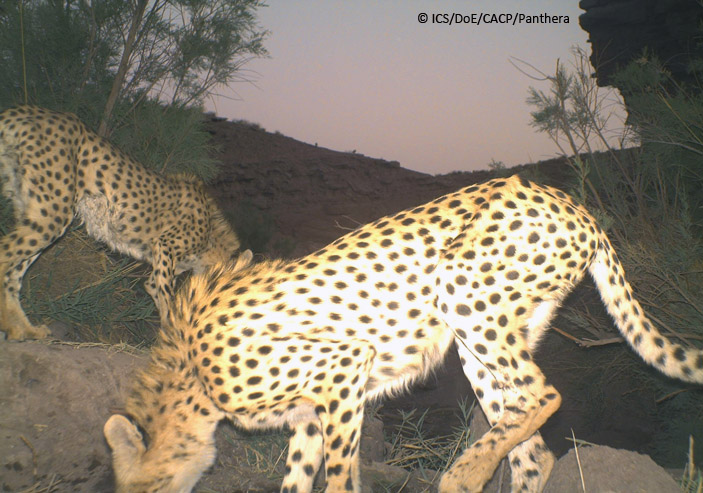
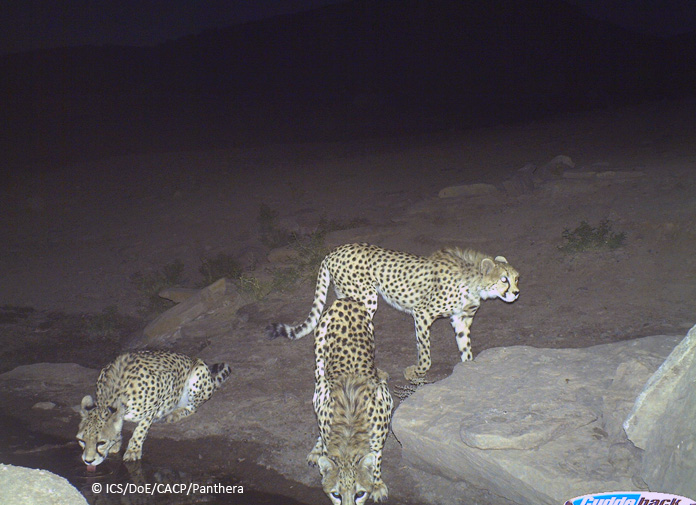
=
“Recent monitoring program by means of camera trapping technology in Naybadan Wildlife Refuge indicated that the cheetah population is stable and no remarkable change in demographic trend is seen. Hosted by Naybadan core zone which is part of the larger 14,000 km2 Naybandan Wildlife Refuge, no more than three individuals have been explored within the population range already recorded for the area between 2002 and 2008 with the same methodology which has been normally between 2 and 4 individuals.
Arash, an adult resident male cheetah is quite dominant in images caught by heat-in-motion camera traps deployed in different parts of the area which looks quite healthy. However, lack of evidence of breeding over past two years has raised a significant concern while efforts are ongoing to find possible signs. Furthermore, more cheetahs are expected to exist in the larger area, as the monitoring program is focused on part of the Wildlife Refuge Initiated since late 2011, Asiatic Cheetah National Monitoring Program has been implementing by the Iranian Cheetah Society (ICS) and Iranian Department of Environment in partnership with Conservation of Asiatic Cheetah Project and Panthera in order to obtain the first comprehensive baseline of the cheetah population in Iran. Extended to eastern country with generous funds from the UK-based PTES, the program now tries to understand feasibility of cheetah re-colonization into Afghanistan from the last established population of the animal in Naybandan Wildlife Refuge in eastern country. Soon after the project field work, a regional meeting is held to report the project’s feedback to local conservation practitioners and also to acknowledge local game guards who were trained and were actively involved in the project implementation.
Ongoing monitoring program has revealed interesting images of multiple cases of wolf depredation on goitered gazelles’ fawns in Miandasht Wildlife Refuge. Gazelles breeding peaks in May when pregnant gazelles leave their herds to find a remote safe place to give birth. While their newborn fawn is able to follow the mom after birth, but they are kept hidden for the very first days and then they chase their mother. With respect to water scarcity within arid environments, the gazelles have to concentrate a high proportion of their daily activities around water sources which can increase their susceptibility to predators, including wolves.
Camera trap images in Miandasht Wildlife Refuge have shown three different events in which the wolves are seen with a young fawn body in their mouth. Nevertheless, it is also plausible that these gazelles have been scavenged, rather than predated. During
past decade, due to enhanced law enforcement in Miandasht, the gazelle population has been experiencing an increasing trend and more carnivore-ungulate interactions are now seen in the area.
Located not far from Turkmenistan border in northeastern Iran, Minadasht has been monitored since 2003 by the Iranian Cheetah Society (ICS), North Khorasan Department of Environment and Conservation of Asiatic Cheetah Project to understand
population composition and trends of different carnivores, particularly the Asiatic cheetah.
